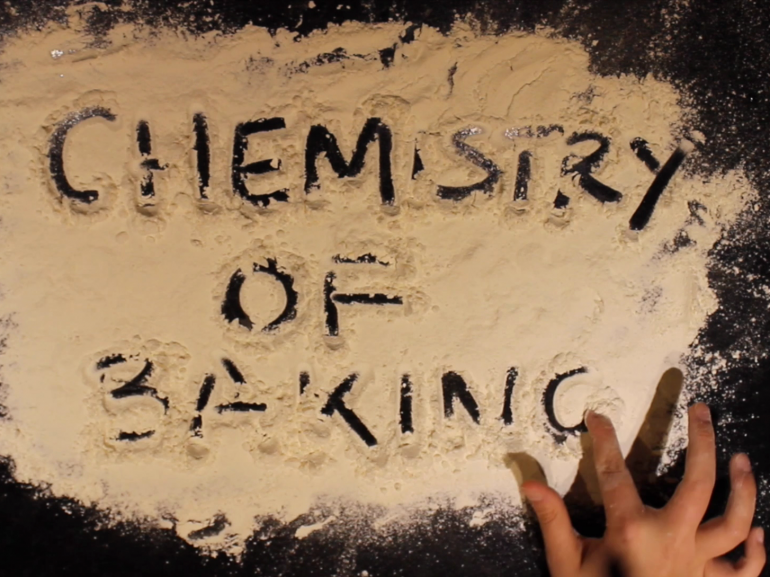
First year students taking Agricultural Chemistry couldn’t see the relevance of what they were studying, and experienced a lack of cohort identity. How did Dr Claudia Keitel, lecturer in the Faculty of Agriculture and Environment, turn this around and not only engage her current cohort but produce resources for future students? We spoke with Claudia to find out more (and take a peek at her students’ creative videos).
Your students have been making videos in your unit. What led you to develop this activity?
“I coordinate and teach a compulsory first-year unit (Biological Chemistry) to agricultural students. Although most students acknowledge the importance of chemistry to their degree, they appear to be mainly motivated by external factors (i.e. assessments) and student feedback revealed that the link between agriculture and chemistry remained unclear.
I wanted to find a way to engage students more with the subject.
“I wanted to design an assignment that was fun, rewarding, and aimed at small groups. The idea to design a video assignment was developed during my studies for the Graduate Certificate in Educational Studies (Higher Education) this year. I learnt that student-generated media can increase engagement and learning in science education, and that videos are relatively easy to produce. Making videos gives students more freedom to express their ideas and become more creatively and emotionally involved with the subject as compared to, say, giving a PowerPoint presentation in class. Through taking a unit in the Graduate Certificate (EDPR6012), I was exposed to eLearning tools that paved the way for this new assignment.
How does it all work?
“I asked the students to create a video about the link between chemistry and agriculture: one that would make future agriculture students excited about chemistry. I suggested choosing an area that they felt passionate about, for example chemistry used in agricultural production, environmental chemistry, food chemistry, chemistry of cooking, etc. They could be as creative as they wanted, but a very complex video was not required. The length of the video was set to 1.5 minutes and the assignment was worth 5%. They obtained the full marks if a minimum standard of content and execution was met. I restricted the group size to 3 to 5 students; these restrictions were necessary as there were about 120 students and I wanted us all to watch the videos in a 3 hour viewing session.
“I gave the students ideas on how to split up the tasks (e.g. storyboard, research, filming, narration, etc.) and students could upload their video via Kaltura, but as a precaution I also asked them to bring their file on a USB stick to the collective viewing session. After the viewing, everyone voted online to award the best video and the runner-up, and a small prize was presented to these students.
What’s been the impact of this innovation?
“This was the first time this assignment was included in this unit, and I was keen to collect student feedback (using Socrative). Everyone really enjoyed the collective viewing session (lecturers as well as students), and students commented that they learnt a lot during the viewing of each other’s videos. Students said the assignment was fun, and that the viewing session increased their sense of community. The understanding of the importance of chemistry to agriculture was also enhanced, as was engagement and importance of group discussion. Some students produced exceptionally creative videos covering many topics and using a variety of techniques. My colleague and I were very impressed by the quality of the videos and the usefulness of the assignment.
What surprised you most about this assignment?
“I was surprised by the resourcefulness of the students. They knew a lot about making videos and using online tools. Some of the videos were very polished and professional. I also was surprised that some students used online voice-over websites, rather than creating their own audio, as I was unaware that these existed. Creating this assignment was a very rewarding experience for me. It required a bit of work to put it together, but the outcome was very positive, and the viewing session a lot of fun.
It increased the students’ sense of community and created a positive learning experience for them, which I think is especially important for first-year students.
Any tips for other academics who might want to try something similar?
- Give it a go! It is a wonderful tool for increasing engagement and learning. If the assignment is well thought out, it can help students understand difficult concepts as they have to explain them to others.
- Think carefully about the balance of investment and reward for students. It takes considerable time to put a video together and the mark should reflect this. I made it worth 5% which was quite low, considering the work required. Student-generated media could comprise a higher percentage of their marks, especially if the task requires them to explain a critical concept.
- Group formation needs to be facilitated, and I used tutorial time to help with this. My students had already formed small groups for another unit, but your students may not have this benefit or know their peers very well.
- Give students clear instructions about the aim of the assignment and the technical aspects, e.g. by providing examples of free software and sample videos, but also give them freedom to choose the software and format (e.g. slowmation, voice-over PowerPoint presentation, movie created with mobile phones etc.). Clear rubrics and learning objectives will help the students complete the assignment and with marking.
- Stress the importance of the audio quality. Most videos had very good sound, but some were very quiet, so difficult to understand, which detracted from the importance of the message. The background music should also not be too loud.
- Video files should not be too big, as there can be some difficulty in uploading them to Kaltura. Most videos were less than 400 mb, and uploading them was not a problem; all large files were associated with the iPhone .mov format.
About Claudia
Claudia Keitel is a lecturer in the Faculty of Agriculture and Environment, based at the Centre for Carbon, Water, and Food at the Camden campus. She trained as a plant physiologist and molecular biologist, and now works with stable isotopes as a tool for measuring plant performance or tracking water flow through a plant, an irrigation system or a catchment. She also oversees the stable isotope facility and studies the effect of heat stress on plant productivity.





